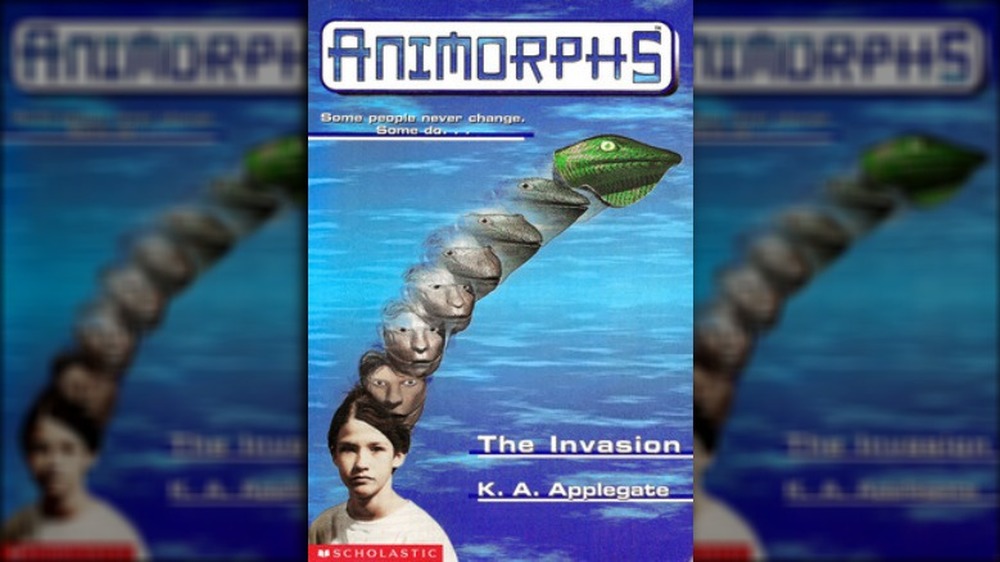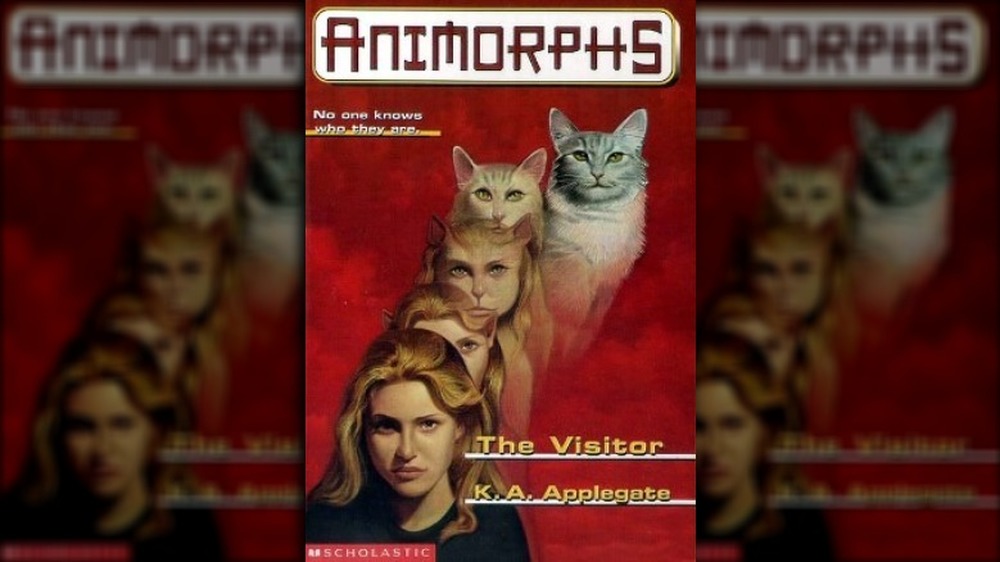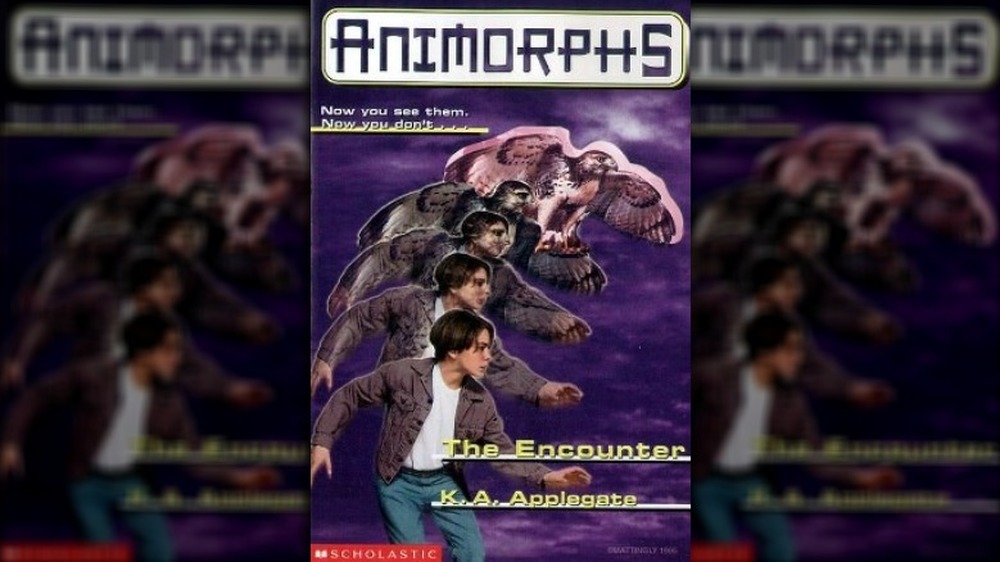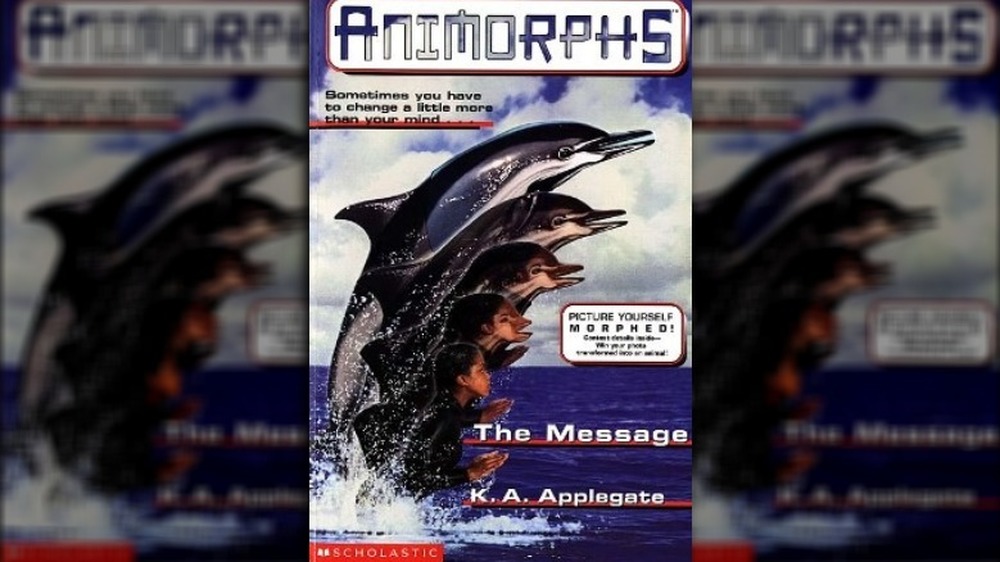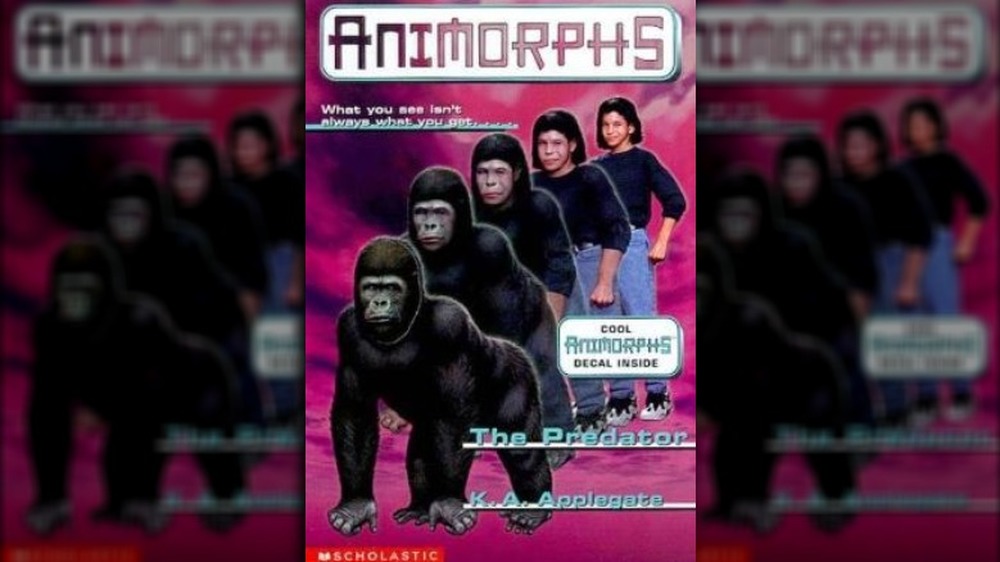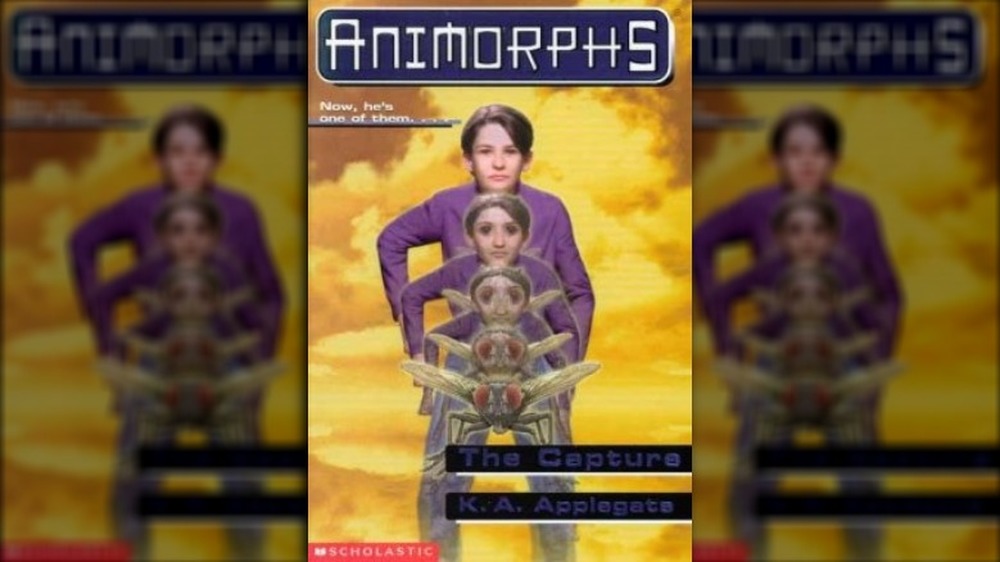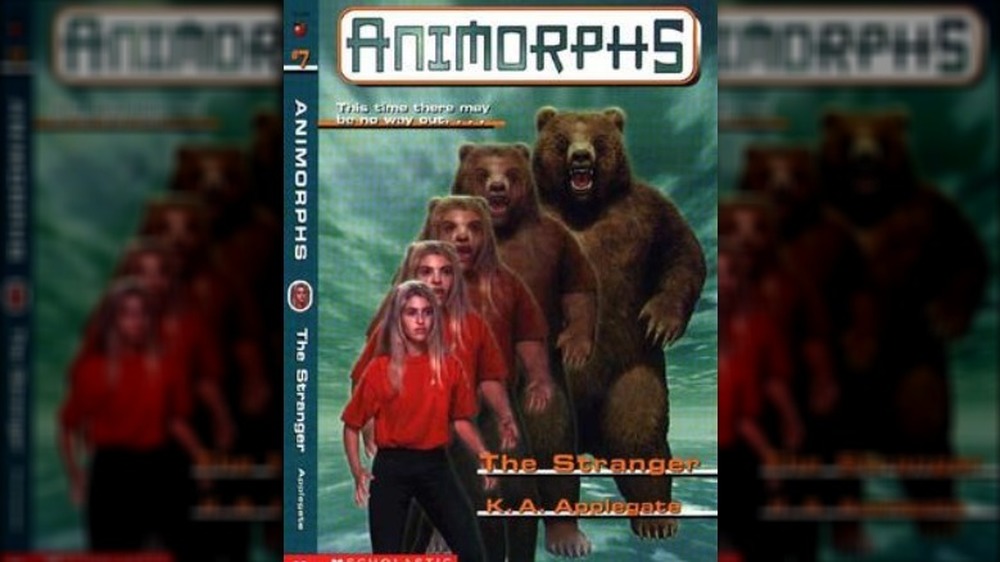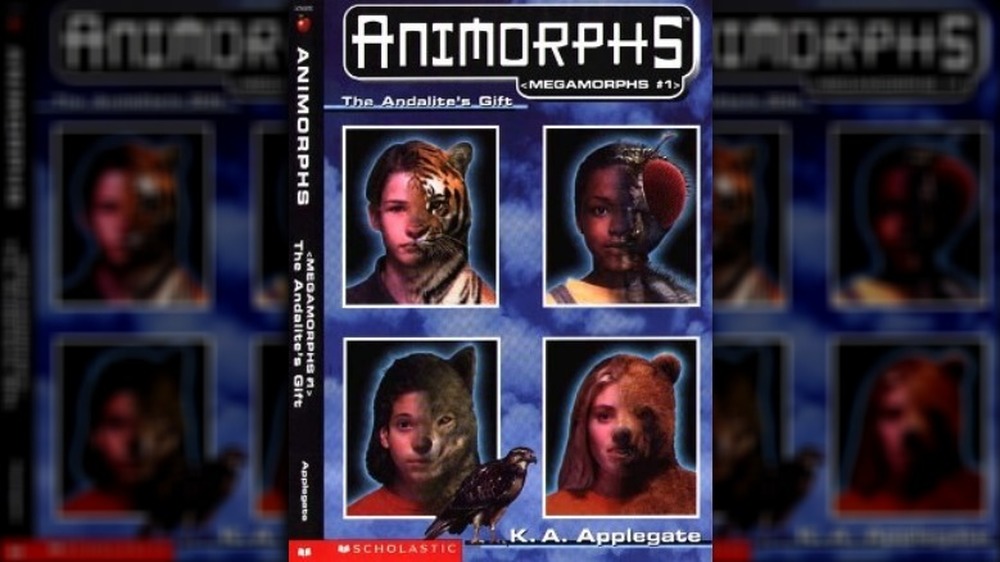Why Animorphs Was A Traumatizing Kids Series
Adults claim they want kids to have innocent childhoods, free of anything horrible or sad or scary. But then they write books allegedly for children that are super messed up, full of stuff that would scare someone in their 30s if they read them late at night. Still, children seem to love these kind of books, the weirder the better. Sometimes you get a whole bestselling series and you only realize how creepy it was many years later, when you look back and go ... wait, what?
At a glance, the '90s book series Animorphs was simple enough: five teens find a wounded alien who gives them the power to become any animal they touch. They then use these powers to fight evil alien parasites called Yeerks, whose invasion plans consist of Invasion of the Body Snatchers-style control.
But for a kids' series, this was way darker and traumatizing than advertised. For example ...
The Animorphs protagonists are child soldiers
At the start of the series, we're given no information on the kids because they have to protect their identity from the Yeerks, and now. What never sinks in until much later is that these literal children have just been handed the responsibility of defending the planet. The Yeerks, as readers well know, infest their hosts through the ear canal and wrap around the brain to control the host. This makes them hard to detect, and is the main reason why the kids are so adamant about maintaining anonymity.
One of the themes that becomes more and more prominent as you read on, is that the protagonists are all essentially child soldiers drafted into a war. There are few clues in the series as to how old they actually are, but they look really young. Like, they can't be older than fourteen, for the most part. Can you recall what you were doing at that age? Not fighting an interplanetary war against parasitic aliens, we bet.
Genocide is apparently acceptable if you're losing
Given that the entire series is about an intergalactic war focused on preventing mass invasion and colonization, one would expect a series marketed toward kids to water down the ugliness of war. HA, nope. Over the course of the series, we gather more information about the brain slugs and just how long the war has been going on: literal, actual decades. In fact, Earth isn't the first stop on the Yeerks' list — the Yeerks have already succeeded in conquering other species, and we're just another notch on their victim list. They were so swift and effective at it, in fact, that their main nemesis, the Andalites, were willing to wipe out an entire host species in order to stop them. They also attempted to wipe out humanity as well, before the Yeerks could infest us.
Horrified yet? Oh, it gets worse. The Andalites are no strangers to using genocide to prevent a successful invasion of the Yeerks. In fact, there was an entire book in the series dedicated to explaining what led up the fiasco that put the Hork-Bajir — a peaceful, herbivorous species — on the endangered list, delivering them into Yeerk hands ... feelers ... whatever slugs use to hold things.
Genocide is one of the central moral dilemmas of the entire series, as the scope and scale of the war expands beyond Earth. It seems time and again, the Animorphs are faced with nasty decisions like this, to the point where it nearly tears them apart. It seems they're okay with killing Yeerks in a battle, but flushing out unhosted Yeerks into the vacuum of space to cull their numbers? Crossing the line. That said, the list of species wiped out by various characters is pretty lengthy for a kids series. We're still wondering what the dinosaurs did to deserve you thinning out their numbers like you did, Tobias.
Cannibalism was an Animorphs cultural staple
One surprising note in the series was the introduction of the Taxxons, a species that practiced cannibalism to the extent of it being uncontrollable. From the descriptions in the book, Taxxons are essentially 10-foot long centipedes with a three-foot circumference, which makes them kind of thick in the waist. While them being akin to centipedes is gross in and of itself, their description gets worse: their mouths are just big round holes filled with rows of teeth. Upon meeting Taxxons, it's pretty clear they're carnivorous. Not only that, but we soon find out that they are very ... squishy.
Most Taxxon battles tend to end quickly, with the Animorphs dispatching them in single blows, tearing the creatures open with barely any effort. Of course, this presents a problem, as Taxxons have an impeccable sense of smell, and when blood and guts are exposed, the others come running ... erm, crawling. This makes them difficult for the Yeerks to control, as the unending hunger of the Taxxon is said to be so strong, it can overpower someone. Taxxons will eat any kind of meat, even each other, Yeerks in their brains or not.
Cannibalism: not even once.
The disabled are acceptable cannon fodder if you're the good guys
As the war heats up and gets progressively worse, the Animorphs are forced to take drastic measures to turn the tide of the war. We know — what could be more drastic than actual genocide, right? Well, turns out that war is not only terrible, but it can bring out the worst and most ruthless part of everyone. Like, we know kids tend to be mean to each other, but we think this is going a little far.
During the height of the war to save humanity, the Animorphs realized they needed more people. Apparently, up until then, five kids and an alien teenager were doing just a bang-up job keeping the Yeerks on their toes by their lonesome. Jake, clearly the genius Animorph kid, has the bright idea to recruit physically disabled kids. Of course, it was ham-fisted in its writing in retrospect, but in the end, the kids agree to it. They become known as the Auxiliary Animorphs, or Auxiliarymorphs ... yeah we're still not sure about that title.
The Auxiliary Animorphs' jobs were simple ... and brutal. As humans, they were "useless" in the war, and therefore seen to the Yeerks as disposable, as the Yeerks were apparently quite ableist. Turns out, they only wanted able-bodied humans to control. The Animorphs see this as a golden opportunity to use the physically disabled kids as a trump card. In their "battle morphs" — that is, in the shapes of heavy-hitting animals and aliens they took — they were great on the field, and helped bolster the numbers of the original Animorphs. However, the sinister side of this is that the Animorphs had no issues using them as cannon fodder during a crucial mission. Spoiler alert: the death toll rises.
Things get weird in Animorphs ... and nihilistic
As the Animorphs series enjoyed a cult following of popularity amongst children and young adults, there were a few special edition books in the continuity that leaned heavy on the philosophical side of war, identity — in general, they gave people an existential crisis. However, as the series progressed and things went from weird to dubya-tee-eff, the characters got a little ... dark.
When a character called the Ellimist is introduced early in the series, we are given a brief peek "behind the scenes" of ... well, the entire universe, really. Two beings are playing a game in the style of a strategy board game ... only the board is the galaxy, and the game stakes are the lives and existences of entire species. Like all games, there are rules, but to two immortal beings with nothing but time on their hands, the game naturally must encompass the stakes of lives. (Also genocide, because where would this series be without it, really?)
The Ellimist is a being of immense power and ability who is essentially the "man behind the curtain" with regards to the events going on in the series. We learn that he's indirectly responsible for major events in the series, including the reason five junior high school kids were given cool powers and shouldered with the burden of fighting an intergalactic war. The kids eventually find out that, for all his power, the Ellimist can't offer them a single lick of assistance, leading them to become disillusioned with the entire concept of a higher power, and aliens in general. Clearly, xenophobia and genocide go hand in hand in this series, so jot that down.
The Animorphs covers were just plain eerie
The best part of getting a new installment of the Animorphs books was that the cover art would always feature the narrator morphing into an animal of some sort, usually the animal they acquired for the featured mission in the book. As a kid, this seemed normal enough, even delightfully weird.
In retrospect ... what?! The cover art was always super detailed, highlighting each stage of the shapeshifting process. Antennae sprouting from a forehead, fingers melting into wings, face rearranging to become the compound eyes of an insect — all of it was part and parcel of the books. They even featured the morph on each page in a flip-book style animation that allowed you to see the morph in motion. It was cool, but after watching Jake morph into an overdrawn mosquito, Rachel morphing into a giant squid, or Tobias going from hawk to whatever creature ... it got to be overwhelming. We guess that's why Scholastic opted to reprint the series, although we can't say the new covers are more comforting or less creepy. They are very green, though, so there's that.
The Animorphs TV show downplayed most of the violent horror
The Animorphs series enjoyed such a lofty tier of popularity in the mid-to-late '90s, it was adapted into a full TV series on Nickelodeon's evening segment of shows called SNICK, which you might remember as the thing to watch back then.
The show toned down the books significantly, to the point where you could theoretically call it an actual "for kids" thing. In fact, if that show is all you know about Animorphs, you'd likely never imagine this could be anything close to a traumatizing series. However, we'd say the awful CGI, terrible prosthetic costumes, and animatrons reminiscent of a tipsy night at Chuck E. Cheese were scary enough on their own, without them adding the blood, gore, screaming, and terror that became staples of the books.
Still, Animorphs was a great series and a cultural staple of the Scholastic book fair. We'd definitely recommend it for older crowds looking to laugh at the dated pop culture references, the quintessentially '90s insults, and a lot of references to stores that were popular at the time. If Animorphs doesn't traumatize you, it'll at least give you flashbacks.
